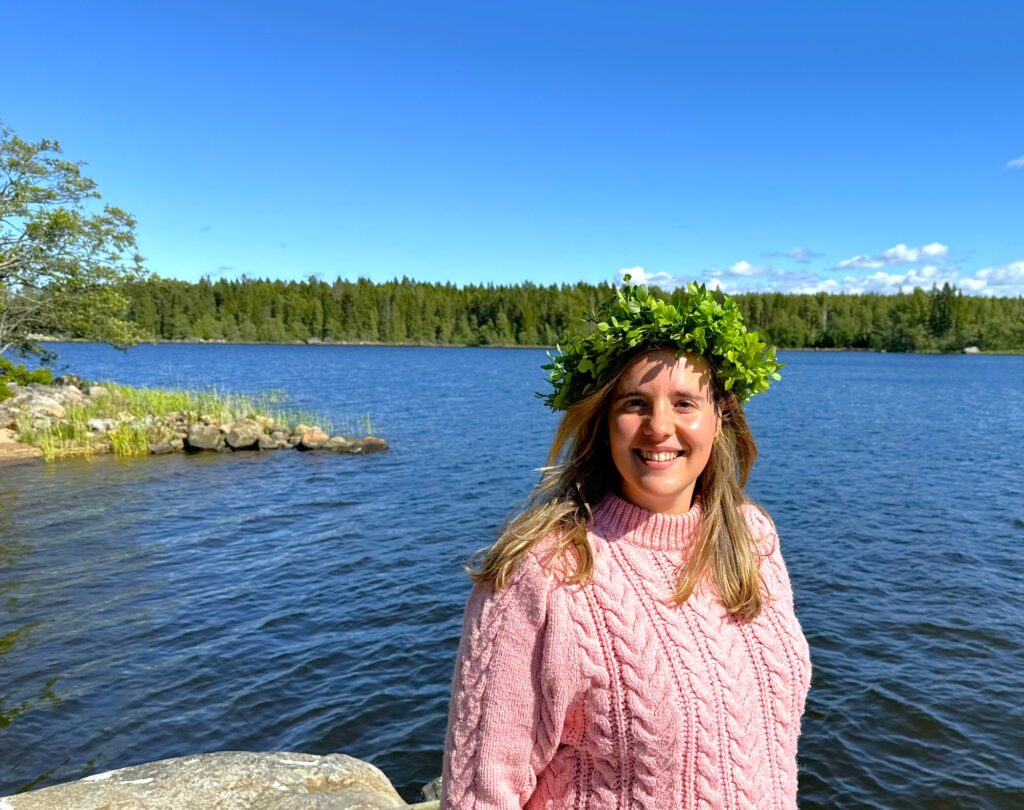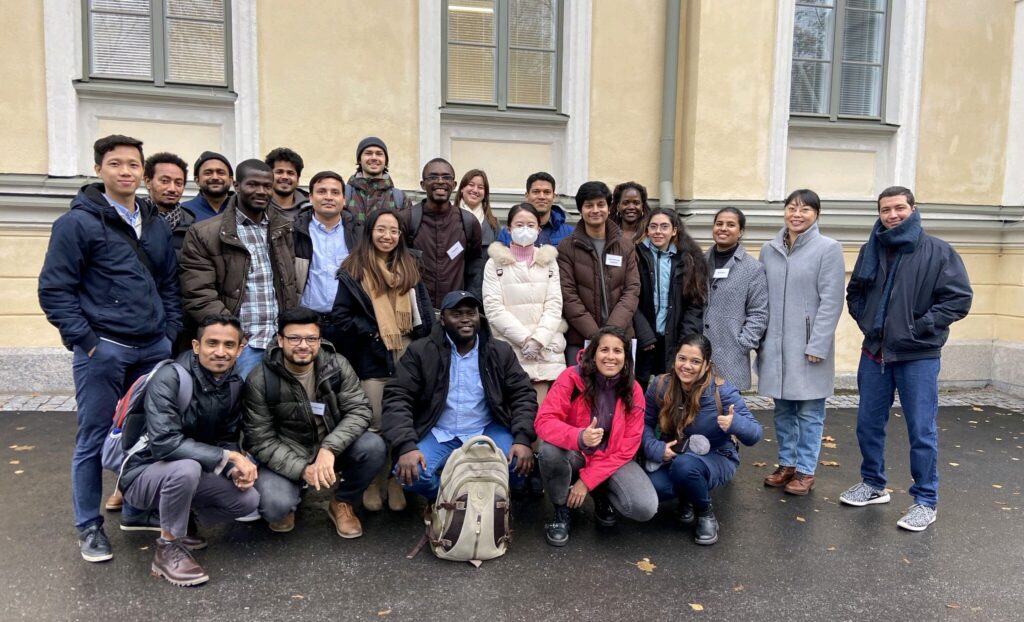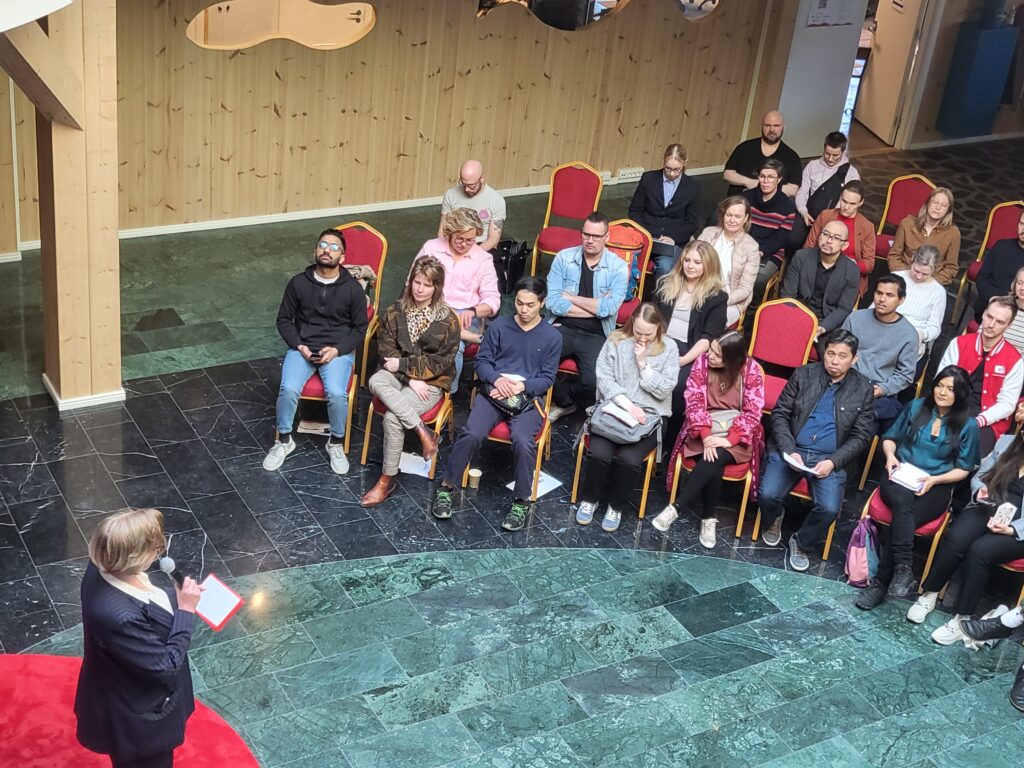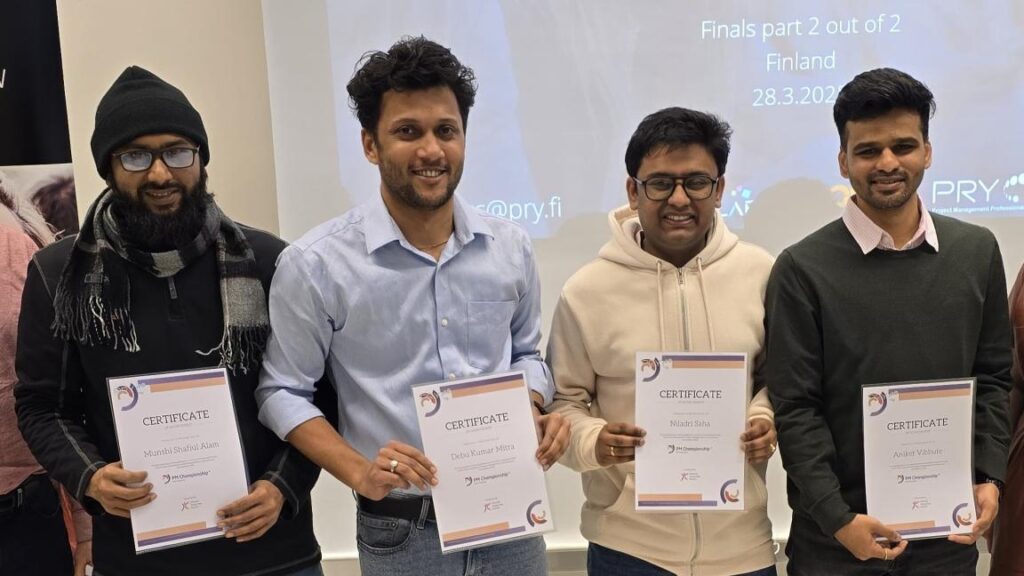Aina Rodriguez Angelet’s language journey started back in Barcelona learning Swedish through an app. Today she works at a Swedish-language University of Applied Sciences in Vaasa, Finland.
Learners of a foreign language are often curious to know how fast and through which means other people have learnt to master a language at a level where they feel confident to use the language for example in a work context. Every language path is of course unique but can still offer inspiration for others.
Finland is a bilingual country, so as someone planning to move to Finland, one important choice that one needs to make is whether to start focusing on learning Finnish or Swedish first. For some the choice is easy, for some not.
For Aina Rodriguez Angelet, starting with learning Swedish was self-evident. How has her language journey been so far, and has it been worth it?
From Spain to Finland
Aina’s journey to Finland began with her Bachelor’s Degree in Business Administration and Economics at Universitat Pompeu Fabra in Barcelona, Spain. During her studies, Aina went on exchange to the United Kingdom, where she met her current partner, who is from Finland.
After finishing her studies and gaining some work experience for a couple of years, Aina decided to move to Finland to pursue a master’s degree in Marketing and Management at Hanken School of Economics.
Upon graduating, Aina embarked on a part-time role at Novia University of Applied Sciences, where she first worked as a Project Assistant and then as Coordinator for the Vaasa International Talents Programme – a programme she herself participated in when she initially moved to Vaasa.
Learning Swedish in Finland
Aina’s path to learning Swedish began with the language app Duolingo while she was still in Barcelona.
“In Vaasa and at the University, I found myself in a Swedish-speaking world, where my partner, my classmates and everyone I knew in Vaasa spoke Swedish, so I enrolled in Swedish classes at Hanken,” Aina explains.
By the end of her studies, Aina could understand the language quite well and keep up with everyday conversations.
“Speaking was tough. I struggled to string sentences together and did not feel confident to try. I wanted to improve my speaking skills and find a job in Vaasa, so I enrolled in an intensive Swedish course at EFO for two semesters.”
The course at EFO – Evangeliska folhögskolan i Svenskfinland – really changed things, as it required active oral participation and provided an immersive environment with classmates from around the world.
“Some of my classmates do not speak English, so we had to turn to Swedish to communicate, which ended up being a great way to practise the language,” Aina says.
Aina’s Swedish language teacher at EFO, Hillevi Lasén, remembers Aina’s language journey well.
Aina engaged wholeheartedly in classroom activities from day one. She was open-minded and took risks, which is crucial when learning a new language. Always inquisitive and ready to communicate, Aina was a true role model, and her results speak for themselves. At the end of the school year, she had exceeded the target level.
Real-world language practice
As part of the course, students needed to complete two language practices of two weeks. As the first practice period happened to coincide with Aina starting her new position at Novia, it felt natural for Aina to combine the two.
To Aina’s supervisor Pia Jünger, who manages the Vaasa International Talents project, this set-up felt perfect, given that Novia is a Swedish-language higher education institution. So, from day one at Novia, working with daily project tasks together with Pia, Aina began speaking Swedish in a professional setting.
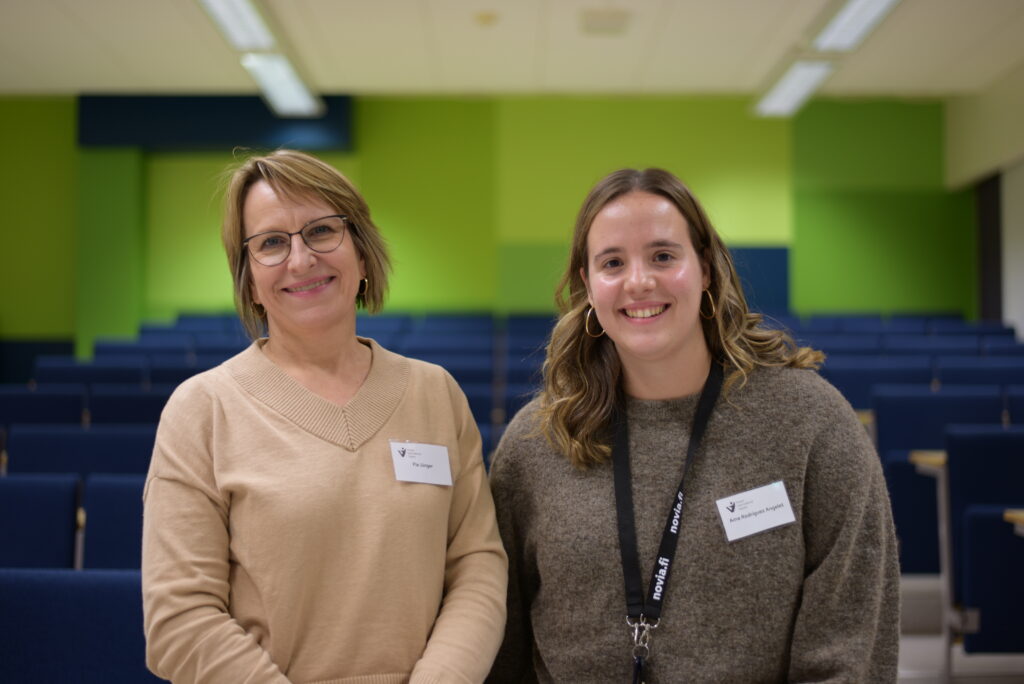
Despite the occasional challenge in communicating, Aina’s perseverance fuelled her confidence to continue studying and practising Swedish, not only with Pia Jünger, but also with other Novia colleagues after the language practice period. As her supervisor notes,
Aina has told me that she values my patient support in her learning Swedish, but the fact is that I do not feel that I have needed any extra patience in our interaction. From the very moment when Aina started to communicate with me in Swedish, I was impressed by her hidden language skills, and from then on, her fluency has developed really quickly.
Aina’s language journey demonstrates the importance of opening one’s mind and practising in real-life situations. That is when language skills truly have a fair chance to develop.
One useful tool for the official two-week language practice was a language plan developed beforehand by Aina. This plan set out her personal goals and expectations for the practice period. It also specified the situations in which she wanted to be corrected and those in which she preferred not to be.
This was beneficial for both Aina and Pia: Aina had a clear goal to strive for, while Pia understood what type of support Aina found most valuable to help her achieve her goals.
Aina’s language-learning journey is ongoing and has a positive impact on her integration into Finnish society.
“I understand my surroundings better, which makes me feel more connected and engaged in daily life,” she concludes.
Tips for fellow language learners
Aina recommends several ways that have worked for her in her learning journey. For starters, learning basic words for daily interactions and building up the courage to speak in daily situations, like in the store or on the bus. Also, consuming content for language learners, such as podcasts or Youtube videos, can be a good way to immerse yourself into the language.
I started to listen to a podcast called “Livet på lätt svenska” (Life in Simple Swedish), specifically designed for intermediate level language learners like myself. This podcast talks about the Swedish language and culture, and it is a fun and interesting way to learn and grow my vocabulary.
She adds that gradually incorporating Swedish books, starting with simpler ones for kids and progressing to more complex ones, has also been very useful for her.
Aina’s journey of learning Swedish is a great example of how important dedication and immersion are in language learning. Having a supportive environment, a good plan, and the courage to make mistakes is key in this process.
For anyone starting on a similar path, Aina’s experiences offer helpful tips and motivation: embrace the journey, look for immersive experiences, and keep pushing yourself. Learning a new language can be challenging, but the personal and professional rewards are well worth it!

